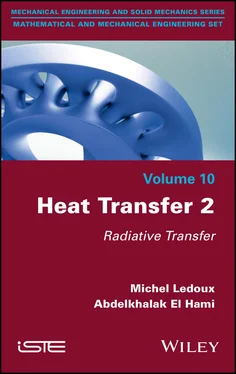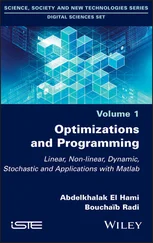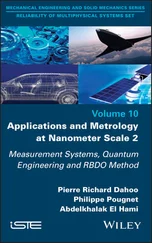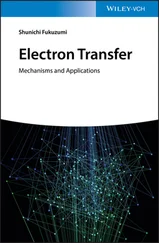The physics that we describe in this way, and to which we will perhaps introduce some readers, is therefore related both to the pinnacles of knowledge and the banality of our daily lives. Modestly, we will place our ambition in this latter area.
There are numerous heat transfer textbooks in different formats: “handbooks” attempting to be exhaustive are an irreplaceable collection of correlations. High-level courses, at universities or engineering schools, are also quite exhaustive, but they remain demanding for the listener or the reader. Specialist, more empirical thematic manuals are still focused on specialists in spite of all this.
So why do we need another book?
The authors have taught at university level and in prestigious French engineering schools, and have been involved in the training of engineers on block-release courses. This last method of teaching, which has been gaining popularity in recent years, particularly in Europe, incorporates a distinctive feature from an educational point of view. Its practice has, in part, inspired this book.
The aim is to help learners who have not had high-level mathematical training in their first years following the French Baccalaureate (therefore accessible to apprentices), and pupils with more traditional profiles. At the same time, we would like to show this broad audience the very new possibilities in the field of digital processing of complex problems.
When a miner wants to detach a block of coal or precious mineral from a wall, they pick up a pneumatic drill. If we want to construct a tunnel, we must use dynamite. The same is true for physicists.
Whether they are researchers, engineers or simply teachers, scientists have two tools in their hands: a calculator and a computer (with very variable power). Since both authors are teacher researchers, they know they owe everything to the invention of the computer. From the point of view of teaching, however, each one of the two authors has remained specialist, one holding out for the calculator and “back-of-the-napkin” calculations, and the other one using digital calculations.
The revolution that digital tools has generated in the world of “science” and “technical” fields, aside from the context of our daily lives, no longer needs to be proved. We are a “has been” nowadays if we do not talk about Industry 4.0. The “digital divide” is bigger than the social divide, unless it is part of it …
Indeed, the memory of this revolution is now fading. Have students today ever had a “slide rule” in their hands? Do they even know what it is? Yet, all the physicists behind the laws of thermal science had only this tool in hand, giving three significant figures (four with good visibility and tenacity), leaving the user to find the power of ten of the result. It goes without saying that a simple calculation of a reversible adiabatic expansion became an ordeal, which played a part in degrading the already negative image of thermodynamics held by the average student.
This reminder will seem useless to some; slide rules are at best sleeping in drawers. But there is a moral to this story: no matter what type of keyboard we type on, a calculator or a computer, our head must have control over our fingers. This book has been written on the basis of this moral.
A good physicist must have a perfect understanding of the idea of an “order of magnitude”. For this, the tool is a calculator. We always do a rough sizing of a project before moving on to detailed modeling and numerical calculations.
The two authors belong to the world of engineering sciences, meaning most of their PhD students have entered the private sector. One of them, having moved into the aerospace sector, came back to see us very surprised by the recurrence of “back-of-the-napkin” calculations in his day-to-day work.
Fundamental or “basic physics” concepts are taken from a type of manual that is resolutely different from those dedicated to the numerical approach. In this case, the authors allow themselves to believe that it is no bad thing to collect them all together in a single book, for once. This is a significant difference that will surprise some and, without doubt, be criticized by others. Nevertheless, when reading this book, an “average” student will be initiated to a field that teaching models generally promised “for later on” (or never if he/she never goes beyond a certain level of education). It is also true that fully immersed in equations and complex calculations, specialist readers will be able to “be refreshed” when faced with the short exercises, which can sometimes surprise and encourage them – why not – to go back to their roots (assuming they had indeed been there).
Another significant difference is that this book is directed at a large scientific audience, which covers possibly the entire field: researchers, PhD students or those who have obtained Confirmation and are just starting out in the field, technicians, students or professionals, engineers. This last type of scientist is perhaps the main target of this book.
So, what is this book for?
Above all, it contains problems to be worked on, of which most are accessible to all, from the level of an apprentice technician upwards, either one or two years after the Baccalaureate. This book was written in France, where scientific teaching is structured around universities, engineering Grandes Écoles, engineering training through apprenticeships and two types of technician training sections at high schools or universities. In countries with simpler models, readers should also find it useful.
It seems necessary to surround these problems with strong reminders of past learning, so that the reader does not need to permanently refer back to their manuals. We see two advantages in this: a presentation of the scientific material focusing on the problems, and a second chance for readers to integrate notions that perhaps had not been well understood in the initial teaching.
Lastly, upon rereading, the authors also recommend this book as an introduction to the taught disciplines.
Thermal science is to thermodynamics as decree means is to law. It answers the following question – which all good leaders must (or should) ask themselves whenever they have an “idea”: “How would this work in practice?”.
In a way, thermal science “implements” thermodynamics, of which it is a branch.
A thermodynamics specialist is a kind of energy economist. Applying the first principle, they create a “grocery store”. With the second principle, they talk about the quality of their products. I add or remove heat from a source or work from a system. And the temperature, among other things, defines the quality of the energy for me.
But by what means do I take or do I give ? Even calculations of elementary reversible transformations do not tell us by what process heat passes from a source to a system.
Thermal science specifies how, but “evacuates” the work. If in a given problem related to, for example, a convector where electrical energy (therefore in the “work” category) appears, it is immediately dissipated into heat by the Joule effect.
Three heat transfer modes can be identified: conduction and radiation – which can be seen separately, although they are often paired up – and convection, which is by nature an interaction of fluid mechanics and conduction.
Dividing the study of thermal science into three volumes is the result of logic. Presenting this work in three volumes is somewhat arbitrary; in our opinion, however, this split was necessary in order to keep the volumes in the collection a reasonable size.
The first volume, entitled Heat Transfer 1, is dedicated to “classic” approaches (analytical treatment) to conduction, which will be of greater interest to readers who are looking for “simple” prediction methods.
Читать дальше












